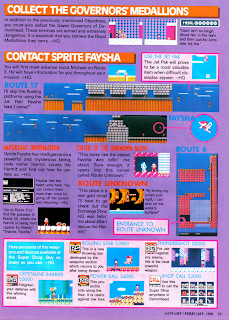
China Warrior takes a lot of shit for being a terrible game. Fuck the haters, this Turbo Grafx-16 classic is worth playing for beat-'em-up and fighter fans from now until the end of time.

Released in 1987 and packaged with the Turbo by Hudson, China Warrior (aka "The Kung Fu") puts you in control of a Bruce Lee clone out to kick everyone ass. Kick people to death as you fight for victory. America wouldn't get the game until 2 years later, but keep in mind this was before Super Mario Bros. 3 was released as well. Altered Beast and Final Fight had not yet hit arcades, so beat-'em-ups were in considerably shorter supply. Don't mistake this context for apologia, China Warrior is a great game in its own right.
The four stages (fields, temple, palace grounds, cave) are broken up into 3 sub-levels. Each sub-level has a boss, and some of these fights are a serious challenge. The 1-1, 1-3, 2-1, and 2-3 bosses can be beaten by perfectly timed attacks easily enough, but everyone else will make the weak of heart cringe.

Strategy revolves around backing away from your opponents attacks, and then moving in and punching. Sometimes pushing right+punch will trigger a superfist attack, although I have not been able to do this move reliably (I suspect it's a random chance to do the attack even if you push the buttons correctly). Countering three punches will initiate a flurry fist attack (a la Dragon Ball Z, Fist of the North Star) that also deals 3 points of damage.
Stages must essentially be memorized, and even with the three continues (accessed via a secret code, see below) you will, I promise, be well acquainted with stage 1-1 by the end of your journey.
The 600 point Wii price tag is a fair deal, and you're better off with China Warrior than a Big Mac Combo. It's a well-known fact that Hudson basically created China Warrior to show off the power of the TG-16, and the nice graphics and simple gameplay make a nice combination. Consider the 1989 release date, ignore the hate, and save the empire. Hudson are masters at making deceptively simple, yet highly addicting games, and China Warrior is a sadly underrated classic.

Finally, a few secret codes I took from some website:
Level skip:
Hold
Up and press
Select +
I +
II to skip the first level. Hold
Down and press
Select +
I +
II to skip subsequent level.
Second loop:
Hold
Up +
Select +
I +
IIand press
Run at the title screen.
Debug mode:
Hold
Run then hold
Select to reset the
game, keep the buttons held, then release
Run and press
Up when the title screen is displayed. Release
Selectand press
Up three times,
Right six times,
Down,
Down,
Left,
Left. Invincibility and level
select will now be enabled.
Three continues:
Hold
I +
II +
Right and press
Run,
Run when the phrase "The End" appears
after game play is over. Alternatively, hold
I +
II+
Down and press
Run at the title screen after game
play is over. The game will continue up to three times from the
start of the last level played.


































